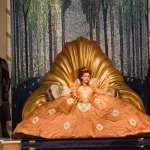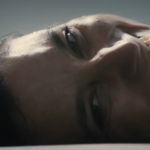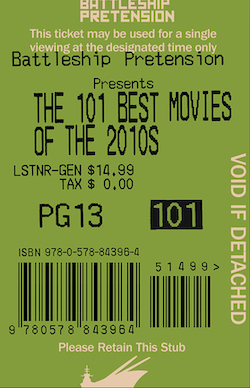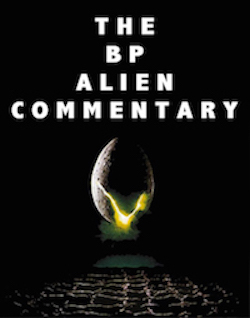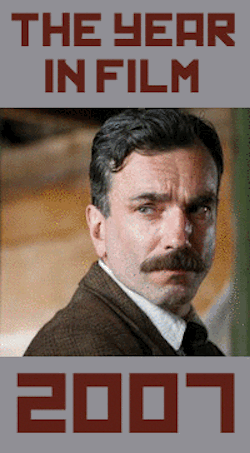The Witches of the Orient: Return Myself to Me, by David Bax

As was the case in his previous film, 2018’s John McEnroe: In the Realm of Perfection, Julien Faraut’s The Witches of the Orient is hypnotic, idiosyncratic, often beautiful and surprisingly fun. In regards to that last descriptor, Faraut–who works extensively with existing footage–has a blast incorporating bits of a 1960s animated series that fictionalized the exploits of his movie’s subjects, a Japanese women’s volleyball team that went on a 250+ game winning streak and became the focus of an unprecedented amount of attention and mania. During footage of an actual game, for instance, he cuts to the cartoon announcers shouting and wiping sweat from the brows while we hear their real-life counterparts calling out the play-by-play. There are other graphic delights, too, like the team member introductions, each starting with present day footage of smiling, elderly ladies and then cutting to freeze frames of them in their playing days with their stats and nicknames imposed around them. It’s like looking at a trading card and it’s the kind of vintage-cool embellishment that might make Quentin Tarantino jealous. The Witches of the Orient is not always fun but it recognizes that sports can be, even when the situations around them are far from enjoyable.
The women who would come to make up the 1964 women’s volleyball team representing the home country of Japan at the 1964 Tokyo Olympics started out as coworkers in a textile factory that sponsored its own team. According to The Witches of the Orient (the title comes from a not-complimentary nickname given to the women by the Soviet media), the gold medal game in which they competed remains one of the most watched events in the history of Japanese television. But that’s just part of their media legacy. Things like the aforementioned cartoon series inspired a subgenre of women’s volleyball anime and manga that is apparently still going today. Faraut pulls from these sources as well as oodles of actual game and practice footage and some very sweet scenes of the women catching up in the present to tell their story.
Furthering his reputation for having exceptional taste in music (Sonic Youth was used to terrific effect in In the Realm of Perfection), Faraut turns full sequences into, essentially, music videos, combining practice footage and shots of textile machinery and other bits of ephemera into dancing images soundtracked by music ranging from Portishead to opera to a couple of new songs by Jason Lytle.
The Portishead song (“Machine Gun”) may be the most memorable since it represents one of The Witches of the Orient‘s most dramatic turns, the realization that the team’s practice regimen was inhumanly exacting and that their coach was robotically unforgiving and demanding. He’s like J.K. Simmons’ character in Whiplash except you can’t ever tell if he’s angry or not. This development in how we view the team–from humble workers to co-sufferers–complicates but ultimately deepens our rooting interest when we see them on the court.
As intentionally anti-conventional as Faraut can be in his role of sports documentarian, he still clearly loves organized athletic competition. Just as he did in his McEnroe doc, he builds to a single, climactic match, the aforementioned Olympic finale against the USSR. He focuses on the finale–a one-point battle–and brings up the investment and the tension so quickly that I stopped reading the movie’s subtitles altogether and just watched the action.
But again, Faraut’s goal is not to give us another inspiring sports documentary, even though the pieces are all there, begging to be assembled in that order. The players, looking back, even talk that way, in terms of overcoming adversity and fateful decision-making. And that’s The Witches of the Orient‘s incision point, the thing that makes us start to wonder if the cultivated public memory of this story has obliterated the private memories of the women who actually lived it.




